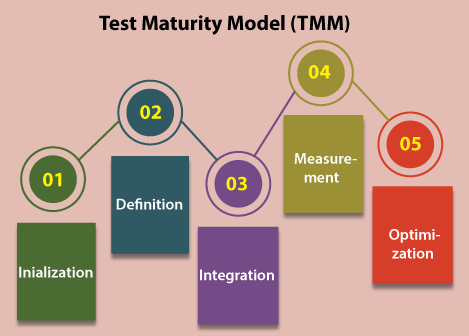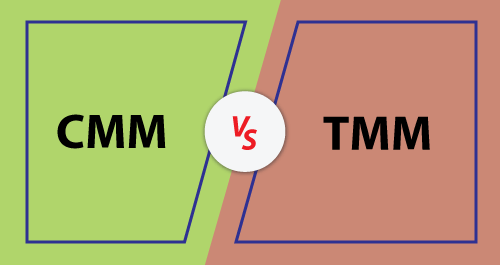Test Maturity ModelIn this section, we are going to explore and discuss the following topics related to Test Maturity Model, and we will also analyze the importance of TMM when it is applied to software testing process.
Before going deep into all the above mention topics, firstly, we will understand the Test maturity Model. What is Test Maturity Model?When software is tested, there are so many techniques are followed to accomplish maximum quality and minimize defects or errors. Test Maturity Model is one of such models which has a set of structured levels and it is based on the Capability Maturity Model (CMM). The Illinois Institute of Technology initially developed the test maturity model, but now it is managed by TMMI Foundation. We have used the Test maturity model to develop strategies and a reference framework for increasing the testing process. Presently, the TMM is replaced by Test Maturity Model Integration (TMMI) which is five level model that provides a framework to measure the maturity of the testing processes. We need to perform the testing phase of the Software Development Life Cycle very efficiently as it plays a significant role in order to complete any project successfully. Test Maturity Model or TMMi is one such process that has made software testing life cycle more resourceful. It is one such model with a detailed model for test process improvement. A Test maturity model's primary purpose is to find the maturity and provide targets to enhance the software testing process in order to accomplish development. It can be used as a stand-alone model or completed with any process improvement model. Why we need TMMi?The Test Maturity Model Integration/TMMi is progressively discover its way into many IT organizations to update and ease their testing process. But the question arises, why do we need the TMMi model? Below are a few significant points, which are helpful for us to understand the need for TMMi.
Levels of Test Maturity ModelThe test Maturity model contains five different levels, which will help the organization fix its maturity. To achieving a higher level of test maturity, these five levels will lead us to identify the next development steps: Let's understand the five levels of TMM one by one in detail:

Level1: Initialization
Level2: Definition
Level3: Integration
Level4: Measurement and Management
Level5: Optimization
After seeing all the five levels of the test maturity model, we can say that each level has its role and responsibility. And the objective of all the levels has to create its well-defined structure. The primary concept of the Test Maturity Model was taken from Capability Maturity Model (CMM). Essentially it is a structured tool that is used for software development and a model to support different business processes. In Test Maturity Model, the term Maturity is measured by the degree of optimized processes. Difference between CMM & TMMSome of the significant difference between CMM and TMM models are as discussed in the following table: 
Advantages of Test Maturity ModelLet's see some of the significant advantages of using the Test Maturity Model (TMM) in an organization: Defect prevention
Organized
Clear requirements
Assurance of quality
OverviewAs compared to the CMM (Compatibility Maturity Model), the TMM (Test Maturity Model) is equally a new topic, but the primary purpose of both the models continues the same. If we want to display how a structured set of levels leads to the high-quality expected output by enhancing the processes, and performance of an organization. For any organization, software maintenance is an expensive and time-consuming process when bugs are identified after project delivery. Therefore, while identifying the defects is significant, it is also necessary that software makes minor errors throughout the development phase. A standard testing process like TMM can help us in order to accomplish this. As we understood from the above discussion, the Test Maturity Model is specially designed to address testing. And to help the organization in order to enhance the maturity of their testing exercises. To make sure the enhancement in testing processes in an IT organization, the TMMi model was developed. And according to the business, these models can be generalized and applied for improved results. It is introduced because the previous model did not focus on the testing processes. Still, the TMMi model is developed to focus on planning and development, and the CMMi model procedures guide it.
Next TopicWaterfall model
|
 For Videos Join Our Youtube Channel: Join Now
For Videos Join Our Youtube Channel: Join Now
Feedback
- Send your Feedback to [email protected]
Help Others, Please Share










